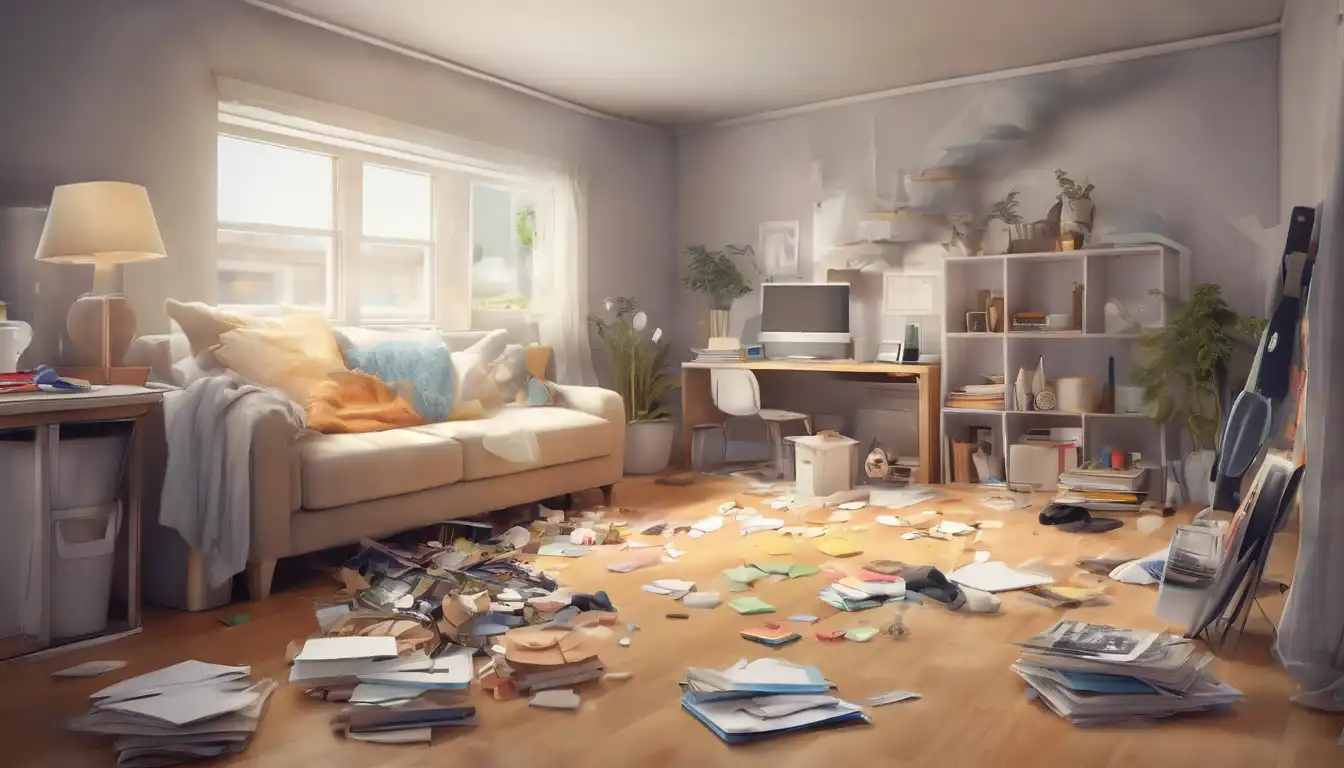Transform Your Space: The Ultimate Guide to Quick Decluttering
Are you tired of living in a cluttered environment that drains your energy and productivity? Decluttering your home doesn't have to be an overwhelming, time-consuming process. With the right approach, you can transform your living space from chaotic to calm in just a few hours. This comprehensive guide will walk you through proven strategies that make decluttering efficient, effective, and surprisingly enjoyable.
Why Decluttering Matters More Than You Think
Before diving into the practical steps, it's important to understand why decluttering is worth your time. A clutter-free home reduces stress, saves time searching for items, creates more functional spaces, and can even improve your mental clarity. Research shows that physical clutter contributes to anxiety and makes it harder to relax in your own home. By implementing these easy steps, you're not just organizing possessions – you're creating a sanctuary that supports your wellbeing.
Step 1: Set Clear Goals and Timeline
Begin by defining what you want to achieve. Are you targeting one room or the entire house? Set realistic expectations – you won't transform everything in one day. Break your decluttering project into manageable chunks, such as "declutter kitchen counters today" or "organize bedroom closet this weekend." This approach prevents overwhelm and gives you a sense of accomplishment as you complete each small task. Remember to schedule specific times for decluttering to ensure you follow through.
Step 2: Gather Your Decluttering Toolkit
Preparation is key to efficient decluttering. Before you start, gather these essential supplies: sturdy boxes or bins for sorting, garbage bags for disposal, cleaning supplies for surfaces you'll uncover, and labels for organization. Having everything within reach will keep you focused and prevent unnecessary interruptions. Consider creating designated areas for items you're keeping, donating, recycling, or discarding – this system will streamline your entire process.
Step 3: The Four-Box Method for Efficient Sorting
This proven technique simplifies decision-making. Label four containers: Keep, Donate, Trash, and Relocate. As you work through each area, place every item into one of these categories. Be honest with yourself – if you haven't used something in over a year, it's probably time to let it go. The relocate box is for items that belong in other rooms, which you can put away after finishing the current space. This method prevents the common mistake of simply moving clutter around instead of eliminating it.
Step 4: Room-by-Room Decluttering Strategy
Kitchen Decluttering Made Simple
Start with countertops – clear everything off and only return items you use daily. Tackle one cabinet or drawer at a time, discarding expired foods, duplicate utensils, and broken appliances. Ask yourself: "Does this item serve a purpose? Do I have something else that does the same job?" This critical evaluation helps eliminate unnecessary kitchen clutter that accumulates over time.
Bedroom and Closet Organization
Begin with your clothing using the reverse hanger trick: turn all hangers backward and only turn them forward as you wear items. After six months, donate anything still backward. For other bedroom items, consider implementing storage solutions that maximize space while keeping essentials accessible. Nightstands often become clutter magnets – limit them to a lamp, book, and charging station only.
Living Room Quick Fixes
Focus on surfaces first – coffee tables, entertainment centers, and shelves. Remove everything and only return decorative items that bring you joy and functional items you use regularly. Implement a "one in, one out" rule for new purchases to maintain your progress. Consider multi-functional furniture with hidden storage to help maintain a clutter-free environment long-term.
Step 5: Digital Decluttering Often Overlooked
Don't forget about digital clutter, which can be just as overwhelming as physical clutter. Set aside time to organize computer files, delete unnecessary photos, unsubscribe from email lists, and organize your digital workspace. A clean digital environment complements your physical decluttering efforts and contributes to overall mental clarity.
Step 6: Establish Maintenance Habits
The real challenge isn't decluttering – it's maintaining your newly organized space. Develop daily habits like the "five-minute tidy" each evening, where you quickly return items to their designated homes. Implement a "donation station" where you can place items you no longer need throughout the year. Regular maintenance prevents clutter from accumulating again and makes future deep-cleaning sessions much easier.
Common Decluttering Mistakes to Avoid
Many people sabotage their decluttering efforts by making these common errors: starting without a plan, trying to do everything at once, keeping items out of guilt, and not having a system for incoming items. Remember that decluttering is a process, not a one-time event. Be patient with yourself and celebrate small victories along the way.
When to Seek Professional Help
If you're dealing with extreme clutter or emotional attachments to possessions, consider consulting a professional organizer. They can provide objective guidance and strategies tailored to your specific situation. Sometimes an outside perspective is exactly what's needed to break through decluttering roadblocks.
Transform Your Mindset Along with Your Space
Ultimately, successful decluttering requires shifting from a "more is better" mentality to valuing quality over quantity. Each item you remove creates physical and mental space for what truly matters. As you progress through these easy steps, you'll likely notice increased energy, improved focus, and greater satisfaction with your home environment.
Ready to continue your organization journey? Explore our guide on creating sustainable cleaning routines to maintain your newly decluttered space. For those interested in taking organization to the next level, our article on minimalist living benefits offers additional insights into simplifying your lifestyle.
Remember: decluttering is a skill that improves with practice. Start small, be consistent, and watch as your home transforms into the peaceful, functional space you deserve. The journey to a clutter-free life begins with a single decision – and you've already taken the first step by seeking out these strategies.
